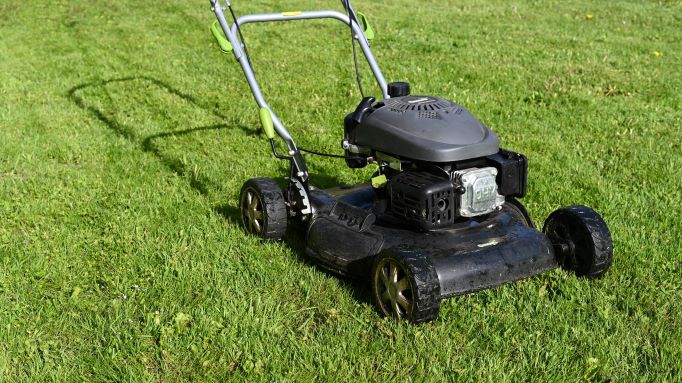What to Know Before You Mow
So, what is there to know before you mow? You put gas in the mower, start it, and then mow. Pretty simple, right? That’s what I thought until I did some research. Here are some things you need to know before you mow.
It may be January in Indiana, and the last thing you want to read is about mowing your lawn. However, spring will be here in a snap, and it’s better to know these best practices before you mow.
Before You Mow
Mow in the Early Evening
The reason to mow in the early evening is to give your lawn time to dry. If you mow in the morning when the grass is still wet from dew, the cuts will be uneven, possibly damaging the grass, and besides, the damp grass will clump up in your mower deck. If it rained on the day you were going to mow – wait until tomorrow.
Don’t Mow to Low
The best practice for most types of grass is only to mow the top one-third of the blade. When the blades are cut shorter, the grass concentrates on regrowing the blades, not the root system. By only topping off the blades, the plant can develop a deeper and more robust root system, which means more nutrients and water. Allowing the grass to grow also makes it more difficult for weeds to find room to grow. Some types of grass, for example, Bermuda grass, do better when cut low, so check your grass type before you set the height.
Throw Out the Schedule
Having a mowing schedule might not get the job done. For example, when the grass is thriving in spring, you may need to mow more often. While in the heat of summer, the grass growth will slow, and mowing too often isn’t good for it. It reminds me of a story about a new building manager who created a trash emptying schedule. After a few days, the manager’s inbox was full of complaints about trash overflowing. So, he called a meeting with the janitorial staff and asked them how they avoided complaints in the past. They told him that by following his schedule, they were emptying waste cans that were empty and missing full ones. The manager asked what to do, and they told him to wait until a basket was full and then empty it. Same with your grass. Wait until it needs mowing.
Don’t Get Stuck in a Pattern Rut
Vary the direction and pattern you mow from one mowing to the next. If you cut the same direction every mow, there’s a good chance you’ll create ruts in your lawn. When you mow the same direction every mow, you train your grass to lean in that direction. The grass is more likely to stand up straight when you change the pattern.
Sharpen Your Blade
In my kitchen knife drawer, I have a couple of favorite knives I use to slice and dice. Do you know why they’re my favorites? Because they’re sharp. A dull knife makes it challenging to cut food how you should cut it. It’s the same with a dull mower blade. A dull blade chops at the grass, leaving it jagged and damaged, leading to further damage. If you’d like to know more about lawnmower maintenance, read this, How to Maintain Your Residential Lawn Mower.
Safety Tip
In 1982 when my youngest daughter was four years old, she attempted to jump on the back of the riding lawn mower her 14-year-old sister was riding. Her sister didn’t see or hear her. Her foot got under the mower and nearly cut her right foot in half. After several surgeries and more than a month in the hospital, she lost a chunk out of her foot and one toe. I remember a photo of her smiling face in a hospital bed in a story in the Indianapolis Star, so I googled it. I didn’t find it, but what I did find were hundreds of photos of other children in Indiana who had similar accidents. Please stay vigilant when mowing.
How Can We Help You?
Berger Hargis has a company philosophy of providing personal excellence for all our services. Our growth and success have been due entirely to our commitment to honest, excellent customer service. The company has been built on the referral business we have received due to this philosophy.
If we can answer any questions, please don’t hesitate to Contact Us.
Photo by Andres Siimon on Unsplash
Go Back







